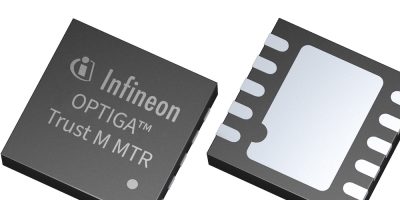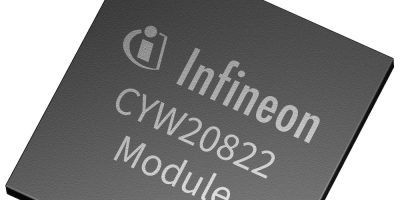In a world of increasing connectivity and the growing popularity of the Internet of Things, it is important to simplify interoperability across connected devices and to enhance their security and reliability. The Matter standard was created precisely for this purpose. In order to facilitate integration of the Matter standard and security features into smart home and smart building devices, Infineon has introduced the OPTIGA Trust M MTR. The Matter-certified secure element is the latest configuration of Infineon’s OPTIGA Trust M, combined with a Matter provisioning service.
According to ABI Research forecasts, the number of smart home devices will double by 2030, reaching about 1.7 billion worldwide. All these devices have to be able to connect securely and reliably with each other and with different smart home ecosystems. That’s where the Matter standard comes into play, facilitating smooth interoperability across connected devices even from different companies. The Matter protocol defines a set of principles that support uniform security and privacy measures for the smart home, since smart homes rely on smart devices to increase not only comfort but also efficiency and security.
The tamper-resistant security controller can be easily integrated into a system to perform security-related functions and provide a high level of protection for sensitive data and cryptographic operations. As a discrete Secure Element, OPTIGA Trust M MTR can be integrated into any MCU-based design to enhance security and handle multiple product protocols simultaneously. This gives original equipment manufacturers greater flexibility and allows faster time to market.
According to the Matter protocol, every smart home device must have a Device Attestation Certificate (DAC), containing the Product ID (PID) and the Vendor ID (VID), to verify the authenticity and trustworthiness of each device commissioned in the Matter ecosystem. With OPTIGA Trust M MTR, the PID no longer needs to be defined in advance when the reel is ordered or manufactured. Instead, each device receives a personalised DAC injection at a later point right up until the start of device production. This gives device manufacturers more flexibility in creating multiple product variants of smart home devices.
OPTIGA Trust M MTR secure elements are pre-provisioned at a Common Criteria-certified Infineon facility. The batch of Secure Elements on a reel is shipped with an associated barcode. The customer claims ownership of these chips on the IoT portal of Infineon partner Kudelski IoT by scanning the barcode. Kudelski IoT is a trusted and established Product Attestation Authority (PAA) approved by the Connectivity Standards Alliance (CSA). Kudelski IoT will enable the download of production DACs corresponding to the vendor and the product. Finally, the personalised DAC is transferred to the OPTIGA Trust M MTR at the factory level (see graphic).
Samples of OPTIGA Trust M MTR are available now together with the OPTIGA Trust M MTR Shield for easy evaluation and design-in. Availability for the broad market will begin in March 2024. In addition, developers can rely on design-in application notes and extensive host-side integration support without having to sign a non-disclosure agreement (NDA). Moreover, Infineon offers training measures for the security products. More information is available at www.infineon.com/OPTIGA-Trust-M-MTR.







